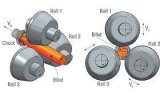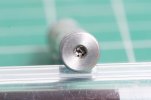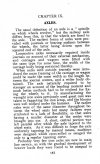simond
Western Thunderer
All you ever wanted to know about wagons but were afraid to ask….
image 1020 shows the axle.
the kids are home for Christmas, one graduated last year, and t’other is on course to graduate next year, both Master’s in Engineering. I too am similarly qualified, and between the three of us, we can’t see a reason for the specific shape - we wonder if it’s to do with the manufacturing process. There is negligible shear force along the central portion of the axle, and the bending moment is constant. The tapered shape is obviously lighter than a cylinder of the major diameter, but heavier than one of the minor diameter, which must be sufficient, so we’re at a loss to offer an explanation.
MrsD is not an engineer, and may therefore deserve your sympathy.
Railway Clearing House wagons
www.cs.rhul.ac.uk
image 1020 shows the axle.
the kids are home for Christmas, one graduated last year, and t’other is on course to graduate next year, both Master’s in Engineering. I too am similarly qualified, and between the three of us, we can’t see a reason for the specific shape - we wonder if it’s to do with the manufacturing process. There is negligible shear force along the central portion of the axle, and the bending moment is constant. The tapered shape is obviously lighter than a cylinder of the major diameter, but heavier than one of the minor diameter, which must be sufficient, so we’re at a loss to offer an explanation.
MrsD is not an engineer, and may therefore deserve your sympathy.



 ) but is it to do with a need for the axle to flex under load so that it does not shear and to do that the dia. is reduced to allow it to do so.
) but is it to do with a need for the axle to flex under load so that it does not shear and to do that the dia. is reduced to allow it to do so.
 ).
).
